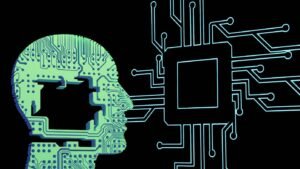Computer Science Theory
The field of computer science theory focuses on the fundamental principles and concepts that underlie the design and implementation of computer systems and software. It is a branch of computer science that explores foundational ideas related to algorithms, computational complexity, programming languages, and more.
Key Takeaways
- Computer science theory delves into the foundational principles of computer systems and software.
- It explores the development and analysis of algorithms and their efficiency.
- Computational complexity theory helps classify problems based on their difficulty.
- The study of programming languages examines their design and constructs.
- Formal methods ensure the correctness and reliability of computer systems.
**Algorithms** are at the core of computer science theory. They are step-by-step procedures or sets of rules used to solve computational problems. These algorithms play a vital role in solving real-world problems efficiently.
*For example, the QuickSort algorithm is a widely used sorting algorithm that efficiently sorts a list of elements by partitioning the input array around a pivot element.*
The Study of Algorithms
**Algorithm analysis** is an essential part of computer science theory. It involves evaluating the running time and space usage of algorithms to determine their efficiency. This analysis helps identify the best algorithm for solving specific problems.
*The Big O notation is commonly used to express the time complexity of algorithms, allowing us to compare their efficiency in terms of worst-case performance.*
Computational Complexity Theory
Computational complexity theory primarily deals with classifying problems based on their difficulty. **P** and **NP** are two important complexity classes. Problems in P can be solved efficiently, while for problems in NP, efficient solutions are yet to be found.
*The famous P versus NP problem, which remains unsolved, asks whether every problem for which a solution can be verified quickly can also be solved quickly.*
Study of Programming Languages
Computer science theory also encompasses the study of programming languages. It involves examining the **design** of programming languages, their features, and constructs.
*For instance, object-oriented programming languages, like Java, provide features such as encapsulation and inheritance, enabling modular and reusable code.*
Formal Methods
Formal methods are used to ensure the correctness and reliability of computer systems and software. These methods apply mathematical techniques and logic to verify whether a system meets its specifications.
*Using formal methods, critical systems like medical devices and aerospace applications can be rigorously verified to guarantee correct behavior.*
Conclusion
In conclusion, computer science theory forms the foundation of various computational theories and techniques, providing a deeper understanding of algorithms, computational complexity, programming languages, and formal methods. It is through this theoretical knowledge that computer scientists are able to develop efficient solutions and build reliable systems in the rapidly advancing world of technology.

Common Misconceptions
Paragraph 1
One common misconception around computer science theory is that it is only applicable to programming and coding. While computer science theory certainly plays a crucial role in programming, it encompasses much more than just coding. Computer science theory deals with the study of algorithms, data structures, computational complexity, and the underlying principles of computation. It helps us understand how computers work and how to efficiently solve complex problems, which is relevant not only in programming but also in various computational fields.
- Computer science theory is not just about coding
- It involves the study of algorithms and data structures
- It is applicable in various computational fields
Paragraph 2
Another misconception is that computer science theory is inherently difficult and only suitable for advanced mathematicians. While computer science theory does involve some mathematical concepts, it is not solely limited to advanced mathematics. Computer science theory is designed to be accessible to individuals with diverse backgrounds and skill levels. It focuses on logical reasoning, problem-solving, and critical thinking, which are skills that can be developed and improved with practice. With proper guidance and study, anyone can grasp the fundamental concepts of computer science theory.
- Computer science theory is accessible to individuals with diverse backgrounds
- It emphasizes logical reasoning and problem-solving
- Anyone can grasp its fundamental concepts with proper guidance
Paragraph 3
One misconception many people have is that computer science theory is outdated and not relevant in today’s rapidly evolving technological landscape. While it’s true that computer science theory has its roots in decades-old concepts, it continues to evolve and remain highly relevant. The principles and concepts derived from computer science theory form the foundation of modern technologies such as artificial intelligence, machine learning, and cybersecurity. Understanding computer science theory is essential to staying at the forefront of technological advancements and creating innovative solutions.
- Computer science theory continues to evolve
- It forms the foundation of modern technologies
- Understanding it is essential for staying at the forefront of technological advancements
Paragraph 4
There is a common misconception that computer science theory is solely theoretical and has no practical applications. While it is true that computer science theory deals with abstract concepts and mathematical models, it has numerous practical applications in the real world. Theoretical concepts from computer science theory are essential for developing efficient algorithms, designing secure systems, optimizing computational processes, and even analyzing vast amounts of data. Without a solid understanding of computer science theory, it would be difficult to effectively solve real-world problems using technology.
- Computer science theory has numerous practical applications
- It helps develop efficient algorithms and design secure systems
- Understanding it is crucial for solving real-world problems effectively
Paragraph 5
Finally, there is a misconception that computer science theory is static and unchanging. In reality, computer science theory is constantly evolving and adapting to new challenges and technologies. As new problems arise and technology advances, computer scientists continue to develop new theories, frameworks, and methodologies to solve them. The field of computer science theory is dynamic, and researchers are continually pushing the boundaries of our understanding of computation and developing innovative solutions.
- Computer science theory is constantly evolving
- It adapts to new challenges and technologies
- Researchers continually develop new theories and methodologies

Table 1: The Top 10 Most Influential Computer Science Theories
Computer science theories have played a vital role in shaping and advancing the field of technology. This table presents the ten most influential theories that have revolutionized computer science, paving the way for new innovations and advancements.
| Theory | Year | Contributors |
|---|---|---|
| Turing Machine | 1936 | Alan Turing |
| Boolean Algebra | 1854 | George Boole |
| Church-Turing Thesis | 1936 | Alonzo Church, Alan Turing |
| Compilers | 1949 | Grace Hopper |
| Information Theory | 1948 | Claude Shannon |
| Operating Systems | 1955 | Allen Newell, Cliff Shaw |
| Database Management Systems | 1970 | Edgar F. Codd |
| Artificial Intelligence | 1956 | John McCarthy |
| Object-Oriented Programming | 1967 | Simula team (Ole-Johan Dahl, Kristen Nygaard) |
| Parallel Computing | 1970 | Gene Amdahl, Frances E. Allen |
Table 2: Percentage of Women in Computer Science Professions
Although computer science has witnessed significant advancements, the representation of women in this field has been relatively low. This table showcases the percentage of women professionals involved in various computer science careers, urging the need for increased diversity and inclusivity in the industry.
| Career | Percentage of Women |
|---|---|
| Software Engineers | 25% |
| Data Analysts | 32% |
| Cybersecurity Analysts | 11% |
| Systems Administrators | 18% |
| Computer Science Professors | 21% |
Table 3: World’s Largest Technology Companies
Technology companies have become powerhouses in the global economy. This table features the world’s largest technology companies based on their market capitalization, providing a glimpse into the dominance and influence of these industry giants.
| Company | Market Cap (in billions USD) |
|---|---|
| Apple Inc. | 2.39 trillion |
| Microsoft Corporation | 2.17 trillion |
| Amazon.com, Inc. | 1.81 trillion |
| Alphabet Inc. (Google) | 1.68 trillion |
| Facebook, Inc. | 1.01 trillion |
Table 4: Average Salaries in Computer Science Careers
Computer science offers lucrative career opportunities. This table displays the average salaries earned in various computer science professions, highlighting the financial rewards that can accompany a career in the field.
| Career | Average Salary (in USD) |
|---|---|
| Machine Learning Engineer | 126,000 |
| Software Developer | 110,000 |
| Data Scientist | 112,000 |
| Cybersecurity Analyst | 98,000 |
| Network Administrator | 85,000 |
Table 5: Top Programming Languages
Programming languages are essential tools for computer science professionals. This table highlights the most popular programming languages based on their usage, helping aspiring developers and programmers make informed language choices.
| Language | Ranking |
|---|---|
| Python | 1 |
| JavaScript | 2 |
| Java | 3 |
| C++ | 4 |
| Go | 5 |
Table 6: Computing Device Shipments by Year
The widespread adoption of computing devices has transformed society. This table showcases the number of computing devices shipped worldwide each year, demonstrating the exponential growth of technology.
| Year | Number of Devices Shipped (in millions) |
|---|---|
| 2015 | 1,874 |
| 2016 | 2,362 |
| 2017 | 2,545 |
| 2018 | 2,728 |
| 2019 | 2,982 |
Table 7: Global Internet Penetration Rates
The internet has become a fundamental aspect of modern life. This table presents the global internet penetration rates, shedding light on the extent of internet accessibility worldwide.
| Year | Penetration Rate (%) |
|---|---|
| 2015 | 43.4 |
| 2016 | 46.1 |
| 2017 | 49.4 |
| 2018 | 51.2 |
| 2019 | 53.6 |
Table 8: Energy Consumption of Data Centers
Data centers are the backbone of the digital world but require a significant amount of energy. This table depicts the energy consumption of data centers and highlights the growing need for sustainable and energy-efficient solutions in the technology infrastructure.
| Year | Energy Consumption (in billion kWh) |
|---|---|
| 2015 | 190 |
| 2016 | 205 |
| 2017 | 238 |
| 2018 | 271 |
| 2019 | 308 |
Table 9: Average Time Spent Online per Day
Our interactions with technology have reshaped our daily routines. This table presents the average time individuals spend online each day, reflecting our increasing reliance on computers and internet-connected devices.
| Year | Time Spent Online (in hours) |
|---|---|
| 2015 | 3.1 |
| 2016 | 3.8 |
| 2017 | 4.3 |
| 2018 | 5.1 |
| 2019 | 5.9 |
Table 10: Impact of Computer Science on GDP
Computer science has significantly contributed to economic growth worldwide. This table highlights the impact of computer science and technology on the Gross Domestic Product (GDP) of select countries, reaffirming the importance of investing in technological advancements.
| Country | Contribution to GDP (%) |
|---|---|
| United States | 10.2 |
| Germany | 6.9 |
| China | 6.1 |
| United Kingdom | 7.5 |
| India | 7.1 |
Computer science theory has revolutionized the technological landscape, enabling advancements that have changed the way we live and work. From the advent of the Turing Machine to the development of artificial intelligence and the ever-growing influence of technology companies, computer science theories have shaped our world. However, as we delve deeper into the field, we must prioritize diversity, sustainability, and ethical considerations to ensure that future innovations benefit everyone. By harnessing the power of computer science and embracing its potential, we can pave the way for a brighter and more inclusive technological future.
Frequently Asked Questions
Computer Science Theory
- What is computer science theory?
- Computer science theory is the study of fundamental principles and concepts that underlie the field of computer science. It aims to understand and explain the nature of computation, algorithms, data structures, and the mathematical foundations of computer science.
- What are the main branches of computer science theory?
- The main branches of computer science theory include computational complexity theory, automata theory, algorithm analysis, formal language theory, computability theory, and information theory.
- What is computational complexity theory?
- Computational complexity theory deals with the study of the resources required to solve computational problems. It explores the classification of problems based on their inherent difficulty and provides insights into efficient algorithms and their limitations.
- What is automata theory?
- Automata theory examines abstract machines or devices and their behaviors, such as finite automata, pushdown automata, Turing machines, etc. It plays a fundamental role in understanding the capabilities and limitations of computers, programming languages, and formal languages.
- What is algorithm analysis?
- Algorithm analysis focuses on studying the efficiency and performance of algorithms. It involves analyzing factors such as time complexity, space complexity, and worst-case/best-case scenarios to evaluate the efficiency of an algorithm in solving problems.
- What is formal language theory?
- Formal language theory deals with the study of formal languages, grammars, and parsing algorithms. It explores the properties and structures of various types of formal languages, such as regular languages, context-free languages, and recursively enumerable languages.
- What is computability theory?
- Computability theory investigates the boundaries of what can be computed in principle. It explores the notion of computation and the limits of algorithmic solvability through concepts like Turing machines, undecidable problems, and the Church-Turing thesis.
- What is information theory?
- Information theory focuses on the quantification, transmission, and storage of information. It deals with statistical and probabilistic aspects of data compression, coding theory, and error detection and correction techniques.
- How is computer science theory relevant in practice?
- Computer science theory provides the foundation and principles upon which practical applications in computing are built. It helps in designing efficient algorithms, understanding the limitations of computing, developing programming languages, and ensuring secure and reliable systems.
- Can computer science theory be difficult to understand?
- Computer science theory can be challenging to grasp initially, as it involves abstract concepts, mathematical reasoning, and formalism. However, with proper guidance and practice, it becomes more accessible and enhances one’s understanding of the core principles in computer science.




